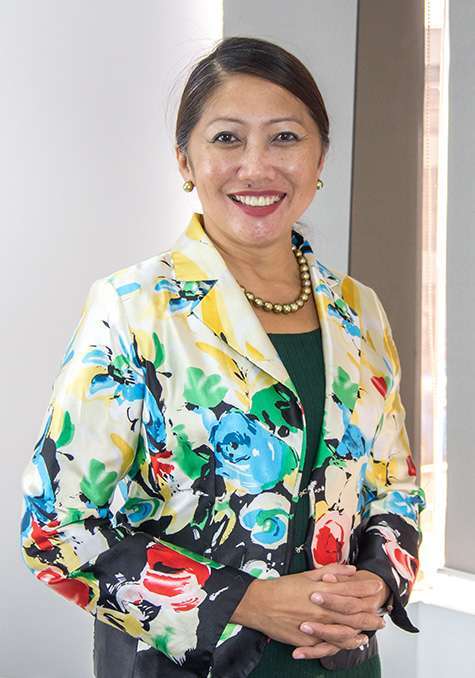If the past few years has proven anything, it is that outsourcing remains one of the key business strategies for organisations looking to gain a competitive advantage by increasing efficiencies, reducing costs and bolstering customer experience. As we emerge into the post-COVID era, global spending on IT outsourcing alone is tipped to reach $519 billion in 2023 (up 22% on 2019)1 and Business Process Outsourcing (BPO) spending will increase to $212 billion (a 19% increase on 2019)2.
As the Chief Executive Officer of Beepo, I am blessed to have a front-row seat to this growth at the Philippines’ largest and leading provider of managed or hosted offshore services and, as such, often get asked how the outsourcing industry is placed or what is coming next. Those questions were also top of mind when I played a role in helping the IT & Business Process Association of the Philippines (IBPAP) produce its Industry Roadmap 2028, which serves as the blueprint for the sector’s priorities in digitization, talent, policy-shaping, infrastructure and country branding for the next six years.
In addition to my CEO duties, I am the head of IBPAP’s Talent, Attraction and Development group and believe there are several exciting developments and trends that will shape the sector I am so passionate about in 2023 and beyond. Here is a quick rundown on these key trends.
Countryside growth
As an industry group, IBPAP focuses on six sub-sectors including Global Shared Services, IT and Software, Healthcare, Animation and Game Development. Then there is the category that employs more than twice the number of people as those combined – Contact Centre, with almost 1 million FTEs. As a director at the Contact Center Association of the Philippines (CCAP), I have a keen interest in Countryside Development (i.e. fostering more provincial workers) and it is pleasing to see IBPAP make a similar commitment in its latest roadmap.
With an estimated growth rate of 8.5%, it revealed the industry is expected to create up to 1.1 million direct jobs in the next six years and has declared that 54% will be in the countryside1. About 30% of the BPO workforce relocated to the countryside due to the pandemic2 and I would love to see that number soar to generate opportunities for both workers and clients in untapped markets.

Work from home
When the reality of the COVID-19 pandemic hit home in 2020, businesses around the world showed remarkable speed and agility in adapting to remote and hybrid work. Three years on and we are one of the many companies that continue to offer our clients and staff the flexibility that comes with work-from-home models and it plays a key role in helping us entice quality talent. We have reinvented how we operate and that includes proactively updating our government certification to meet the needs of an outsourcing industry that, according to the IBPAP roadmap, will see 80% of BPO staff migrate to remote or hybrid work.
Like many contact centers and BPOs in the Philippines, we have traditionally sought incentives from PEZA (Philippines Economic Zone Authority) but were forced to reconsider our options during the past year due to a return-to-office mandate that would see businesses with as few as five remote workers no longer qualify. That inspired us to commence discussions with the government and industry associations and I am pleased to say we influenced a ruling that has allowed us to transfer our registration to BOI (Board of Associations), which does not rule out incentives based on whether staff are in-center, hybrid or working from home and while that is good news for us, it is great news for our clients.
Business continuity
If the pandemic taught us anything, it is that you cannot put a price on working with partners that can be trusted to deliver business continuity in good times and bad. Where some businesses choose to repeatedly switch between suppliers and service providers as they search for ‘better’ deals, the downside is they risk losing productivity and making it harder to predict performance targets and other metrics. The COVID-19 roller-coaster has created an environment where more organisations have realised the benefits that come with cultivating trusted relationships with fewer outsourcing companies. There is a lot to like about knowing what to expect, dealing with less churn and the unpredictability of new partnerships, hence why many businesses will invest in building stronger relationships with less partners in 2023.

Gig economy alarm bells
The ‘Philippines gig economy’ attracted a lot of headlines in 2022, with the country one of the fastest-growing gig markets in the world3 and up to 1.5 million Filipinos registered on international online platforms for freelancing services4. I am the first person to praise Filipinos as excellent workers but there is no denying many Australian businesses are ending up frustrated and even out of pocket after linking directly with independent freelancers rather than established outsourcing providers. While the latter includes background checks, ISO compliance, seamless onboarding, performance metrics and strict adherence to payment and tax obligations, working with relatively unknown individuals in the gig economy is increasingly backfiring on Western firms. Look for 2023 to be the year when more of those firms take heed of the warning bells they are hearing.
Summary
I have always felt blessed to work in the outsourcing industry, particularly in a destination as dynamic as the Philippines, but there is something particularly special about the energy currently sweeping our sector. Technology is ensuring closer ties between offshore workers and their onshore colleagues. Changing attitudes to remote and hybrid work are allowing more Filipinos from more regions to shine. An increasing number of Australian organisations are enjoying the rewards that come with linking with quality outsourcing providers. Having successfully navigated the hurdles that the pandemic put in front of us, the future is indeed looking bright.
The pros of outsourcing are universal but it is vital to make sure your provider is transparent about their expenses. Discover the hidden costs of outsourcing that businesses should look out for to avoid a poor return on investment.
References:
1. 47 New Outsourcing Statistics (2023-2026) (explodingtopics.com)
2. outsourcing-outlook.com/assets/pdf/Deloitte-DOC-Whitepaper_outsourcing-and-shared-services2019-2023.pdf
3. Insight: Philippines Freelance Market 2022 Report identifies uphill trend of Filipino freelancers with overseas clients - adobo Magazine Online
4. The Philippines Freelance Report 2022 (payoneer.com)














































.jpg?width=299&height=196&name=Mega%20Menu_FAQs%20(1).jpg)








